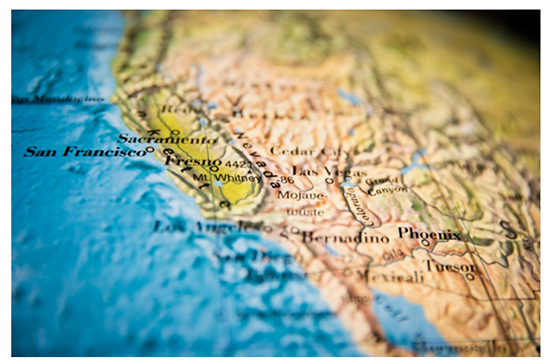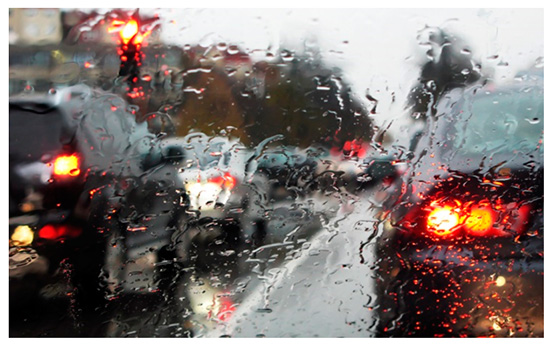Sunny, 70 degrees Fahrenheit, and not a speck of snow: That’s how most of the country understands wintertime in California. However, native Californians know better. West Coast winters, though considerably milder than cold seasons elsewhere in the world, can be surprisingly intense, especially if you aren’t prepared. Though average temperatures do not drop below zero ― or even much below freezing ― the winter chill is made more palpable with excessive seasonal rains.

How To Prepare For A California Winter
Whether you are new to the West Coast or you know you’ve barely suffered through winters past, here are some smart winter organization tips to keep you warm and dry during California’s cold and wet season.
Prepare Your Home
Winter is when California receives the majority of its annual rainfall, which means December through April gets especially wet. Precipitation is notably high during El Nino years, when ocean currents act irregularly and bring cold, wet winds to the West Coast. Before the rainy season hits, you should clean and inspect your roof and gutters for weaknesses and leaks, repairing any you find. A fresh coat of paint on your home’s exterior ― including decks and balconies ― will prevent rot and termite infestation, and resealing your windows (as well as calling the exterminator) will keep rain and bugs outside.
If you have a basement, it is wise to invest in a sump pump. Because many California homes extend below the water line, it is common for water to accumulate and flood subterranean rooms. Fortunately, sump pumps will hastily remove water, sending it away from the house through storm drains or dry wells.
In addition to waterproofing, there are a few simple ways to winterize your home, regardless of its location. It is also wise to have a backup generator handy, in case seasonal storms knock out power lines during a particularly chilly evening.
Prepare Your Yard
California soils are markedly impermeable, which prevents rainwater from effectively draining and causes extremely dangerous flood conditions around the state. By preparing your outdoor spaces for the rainy season, you can save yourself and your neighbors from expensive and extensive wintertime damage.
Recently, the droughts have encouraged homeowners to substitute rocky hardscapes for their water-intensive lawns, which has changed the way water drains from their yards. You can encourage natural drainage by tilling the soil around your yard, adding absorbent compost to the impacted earth, and you should bury three to four inches of mulch beneath your gravel. You can also preserve your landscape with DIY rain barrels at the ends of your downspouts, catching rainwater for later use.
Winter winds have a tendency to carry away items left outside, so you should either tie down or store indoors any important item you usually leave outside. Strong fencing helps to keep your yard contained.
Perhaps most importantly, you should speak to your neighbors regarding flood safety. Many cities in California are particularly hilly, and surrounding houses might be higher in elevation than yours. If your neighbors fail to prepare for winter, you might suffer the consequences, so it pays to have a chat before the rains set in.
Prepare Your Car
You can’t get anywhere in California without a reliable set of wheels, but your car is as susceptible to the winter weather as your home. Driving in the cold, wet season is remarkably different from speeding around during regular California weather; roads can become hazardous quickly, especially if you and your car are not primed for the unusual conditions.

Whenever it rains, the tires on your car should be your primary driving concern. At least 50 percent of your car’s tire treads should be intact to allow your car to maintain contact with the wet road. Your tires should also be inflated to the proper pressure, as uninflated tires fail to channel water correctly and slip and slide over the pavement. Additionally, your brakes will not function as well in cold, wet weather, so it is imperative that your brake pads be in superior condition during wintertime.
While it is important to keep your car in top shape year-round, California winters also necessitate a change in driving attitude. Though in warm weather you might be tempted to exceed speed limits and dash in and out of lanes, poor winter weather makes this behavior exceedingly risky. Instead, you should schedule extra time to get to your destinations during the winter months, as the storm conditions could cause unexpected delays.
You should avoid using cruise control or any feature that allows you to relax your attention; in fact, you should strive to be more observant than usual, so you can avoid obstacles like black ice (which can form at any temperature below 40 degrees Fahrenheit) or out-of-control vehicles. You might also want to use a glass treatment like Rain-X to make sure you can see good out your windows!
Winter in California might not come with the week-long blizzards other regions of the U.S. expect, but that doesn’t mean Californians shouldn’t prepare for the season. Being safe and warm during winter requires some planning and action everywhere in the country; fortunately, Californians don’t need snowshoes to survive.






Speak Your Mind